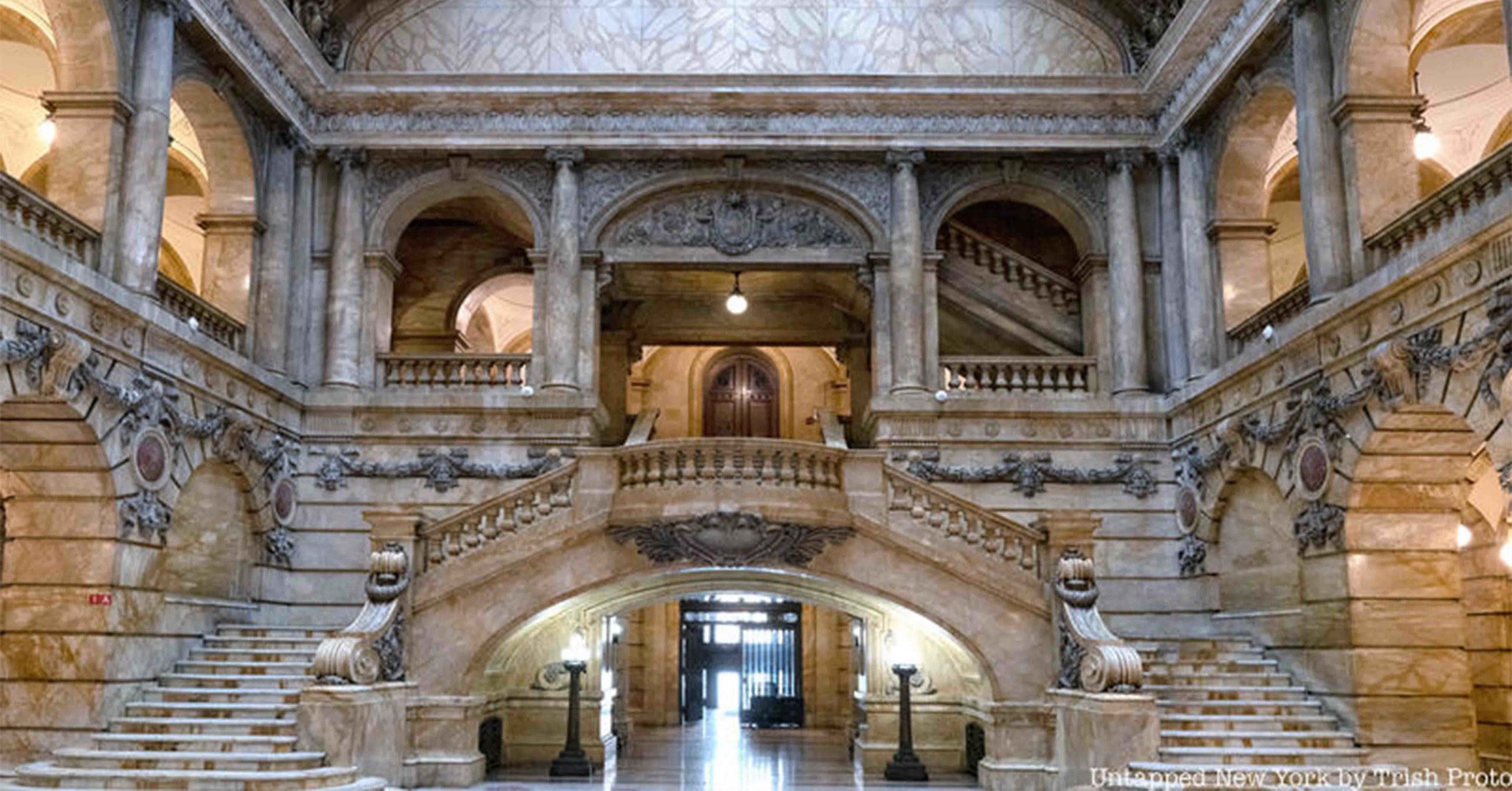The Surrogate’s Courthouse is a seven-story Beaux-Arts building located at 31 Chambers Street in the Civic Center district of Manhattan. While most of the building is usually off limits to the public, Untapped New York was given special entry to attend a pop-up event hosted by the Department of Records and Information Services (DORIS) called Greensward. The event commemorated landscape architect Frederick Law Olmsted’s 200th birthday by showcasing his most famous design: the Greensward plan for Central Park.

On March 31st, 1858, Frederick Law Olmsted and English-born designer Calvert Vaux submitted their plans for “The Central Park.” They were a last-minute submission, arriving at the Arsenal Building with their drawings only minutes before the evening deadline. At first, the Greensward Plan didn’t stand out among the 32 other submissions, and the New York City government considered all of its options rather lackluster. Although the City was hoping for grand European designs, they liked the natural beauty of Olmsted and Vaux’s Greensward Plan, and it was accepted in 1859. The hand-drawn maps and sketches have since been preserved and can be found at the Municipal Archives in the basement of another masterwork of the 19th century: the Surrogate’s Courthouse.
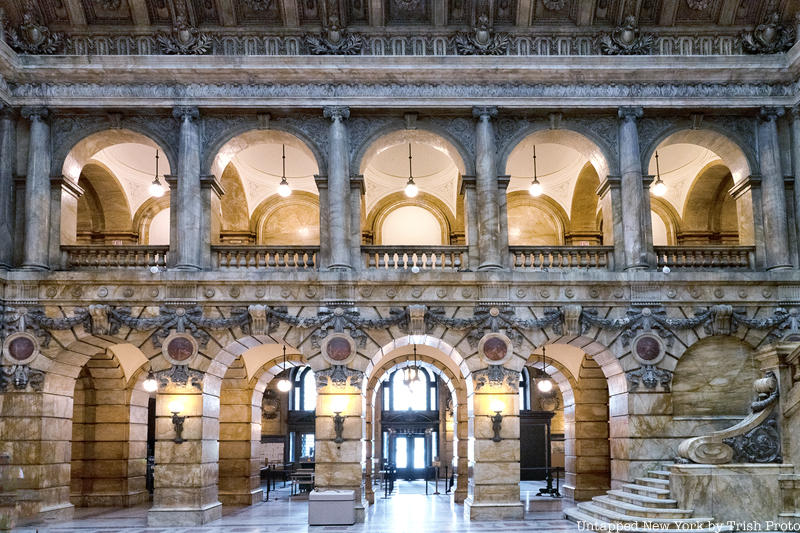
The Surrogate’s Courthouse is a stately structure dating from the late-19th century. It was designed by the New York-based architect John Rochester Thomas and constructed between 1899 and 1907 at a cost of more than $7 million. Thomas was extremely prolific for his time, designing over 150 churches, a handful of armories and prisons, and the 1886 New York Stock Exchange. While Thomas would never live to see the completion of his final masterpiece (he died in 1901) the building has lived on largely unchanged.
The building’s facade is made of solid granite, mined and transported from Hallowell, Maine, and its interior is clad in yellow-marble. The main entrance is composed of three grand, double-height doorways which lead into a three-story atrium lined with Sienna marble. For the grand staircase in the first floor rotunda, Thomas drew inspiration from the Paris Opera House, which led the building to be called the most Parisian thing in New York at the time it was built. There is a magnificent skylight over the atrium, whose restoration Untapped reported on in 2020.
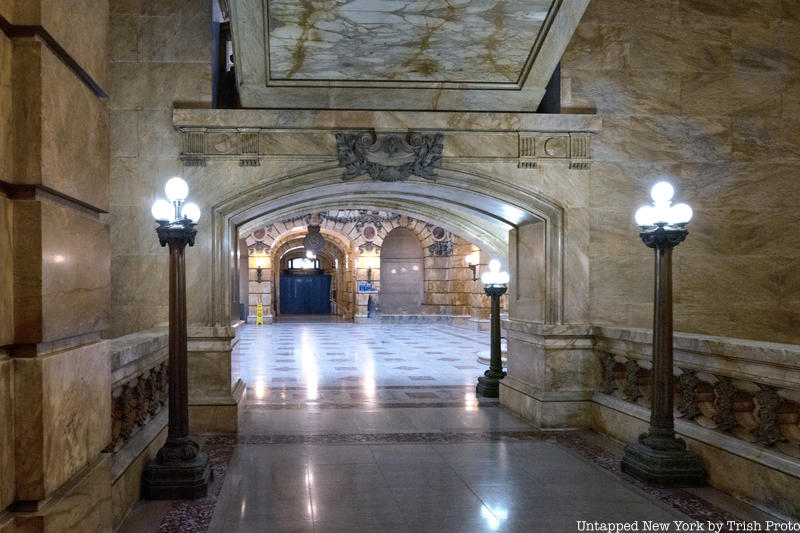
The building that is now called the Surrogate’s Courthouse was originally named the Hall of Records. It was constructed to replace the old Hall of Records building, which was built in 1831. It was always planned that the building would contain more than just the city’s archives and records, and when the new Hall of Records opened in 1907, it housed multiple city departments and courts, one of which was the Surrogate’s Court. By the middle of the 20th century, the building was primarily used by the Surrogate’s Court, which occupied the fifth floor and had offices on many of the lower floors. Thus, the building’s name was changed from Hall of Records to Surrogate’s Courthouse in 1962.
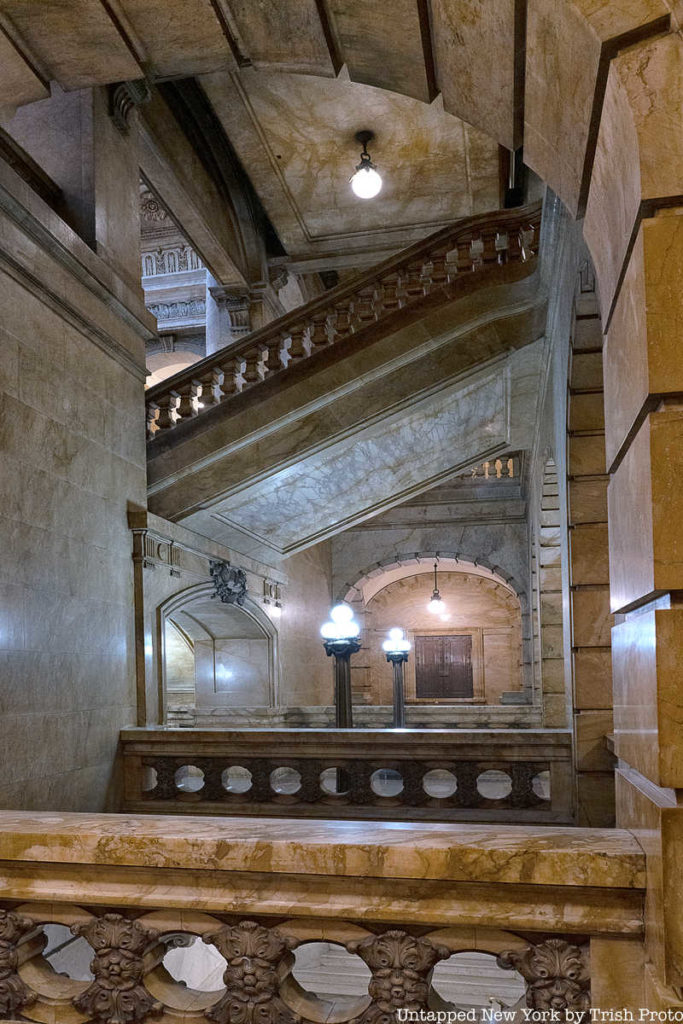
However, the basement has always been used to store archives and records, and now it’s the home of the Department of Records and Information Services (DORIS) and New York City Municipal Archives (a division of DORIS). The amount of material in the fire-proof basement collection totals over 200,000 cubic feet, housing more than 285,000 newspapers and 66,000 books. Inside this treasure trove are documents from the original Dutch New Amsterdam government and the initial plans for the Brooklyn Bridge. Some of this material is even publicly accessible through the Municipal Library, which is also located in the basement of the Surrogate’s Courthouse.
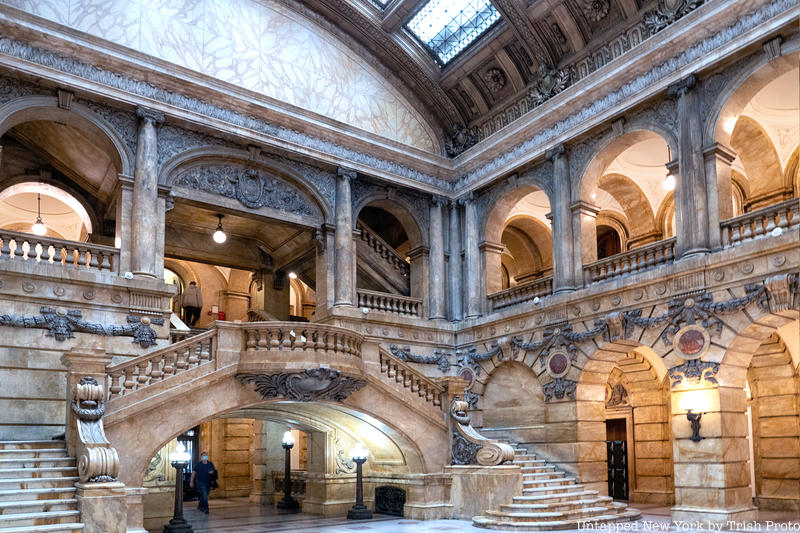
Just as Olmsted’s design of Central Park lives on in New York, John Thomas’ Hall of Records building continues to grace New York with its Beaux-Arts beauty. These two classic works of nineteenth century design show the value of adaptive reuse and how buildings can change over time to suit the needs of each generation.
Next, check out 14 Frederick Law Olmsted, Sr.-Designed Sites in NYC and the Surrounding Area!






